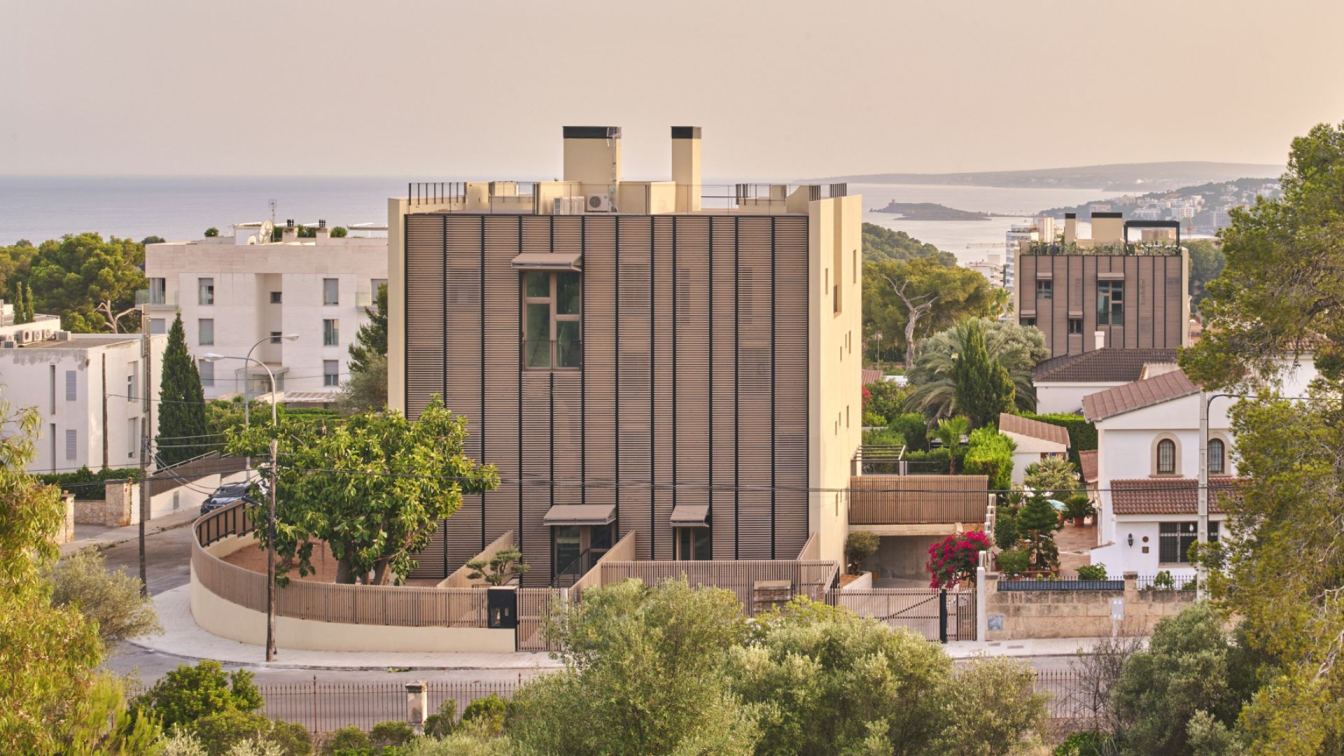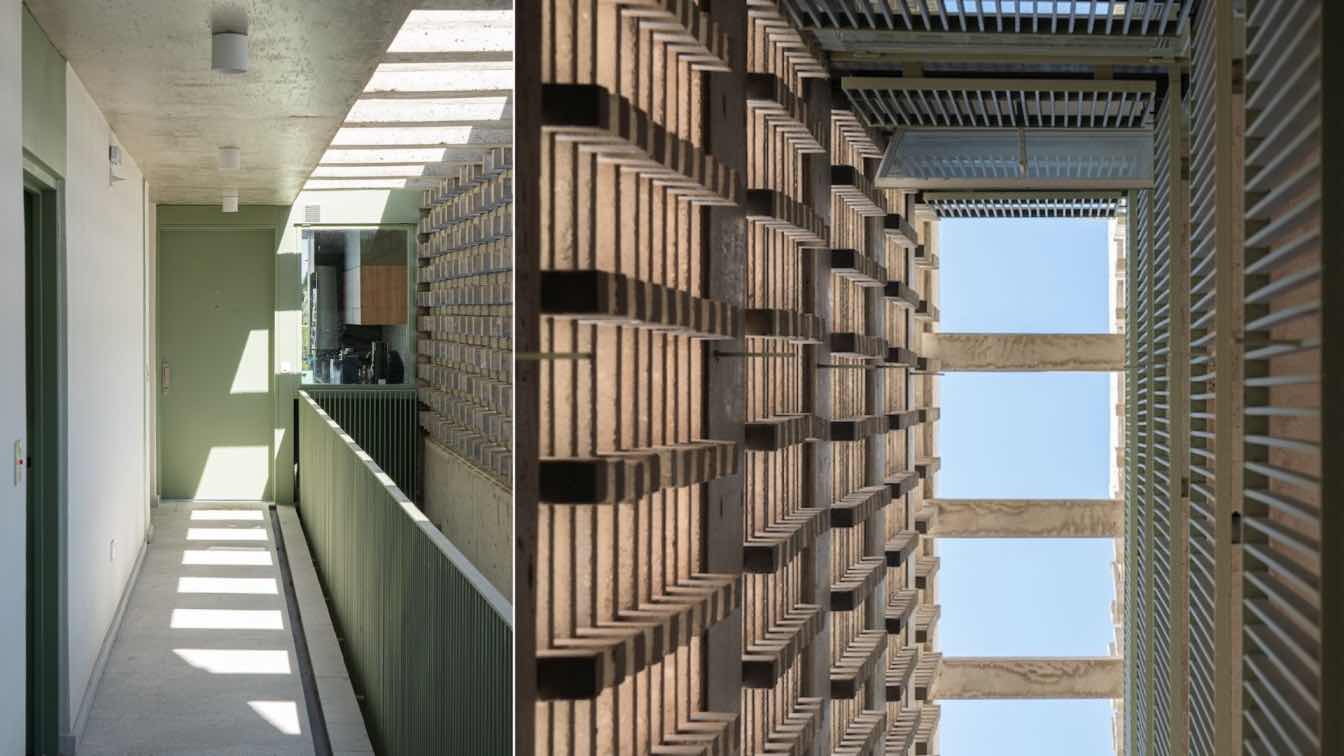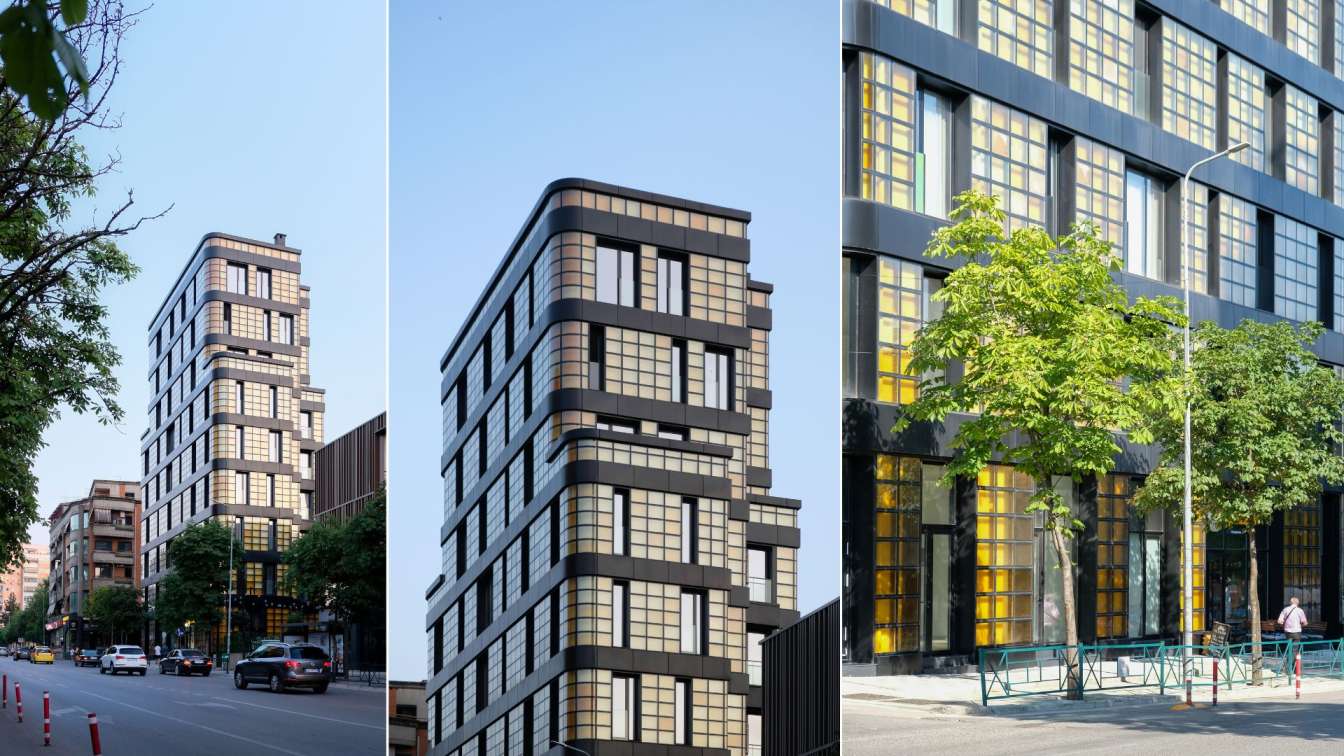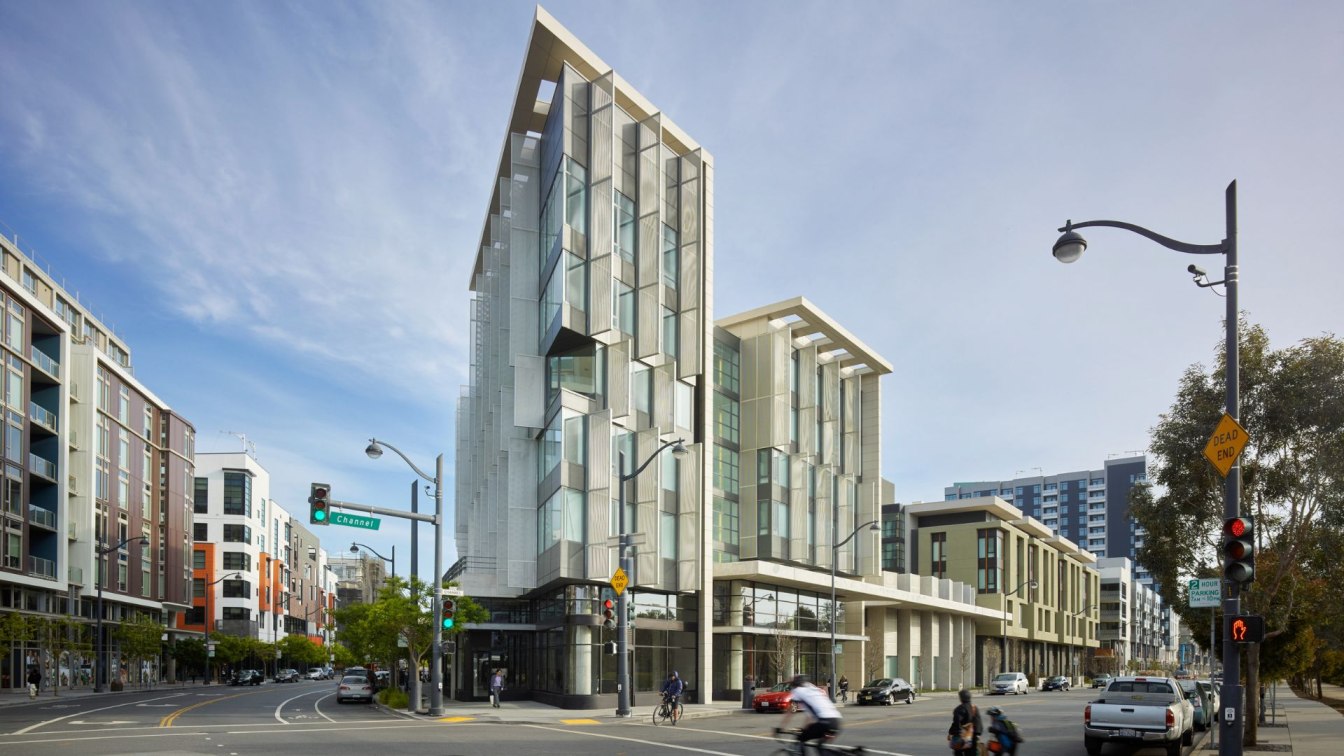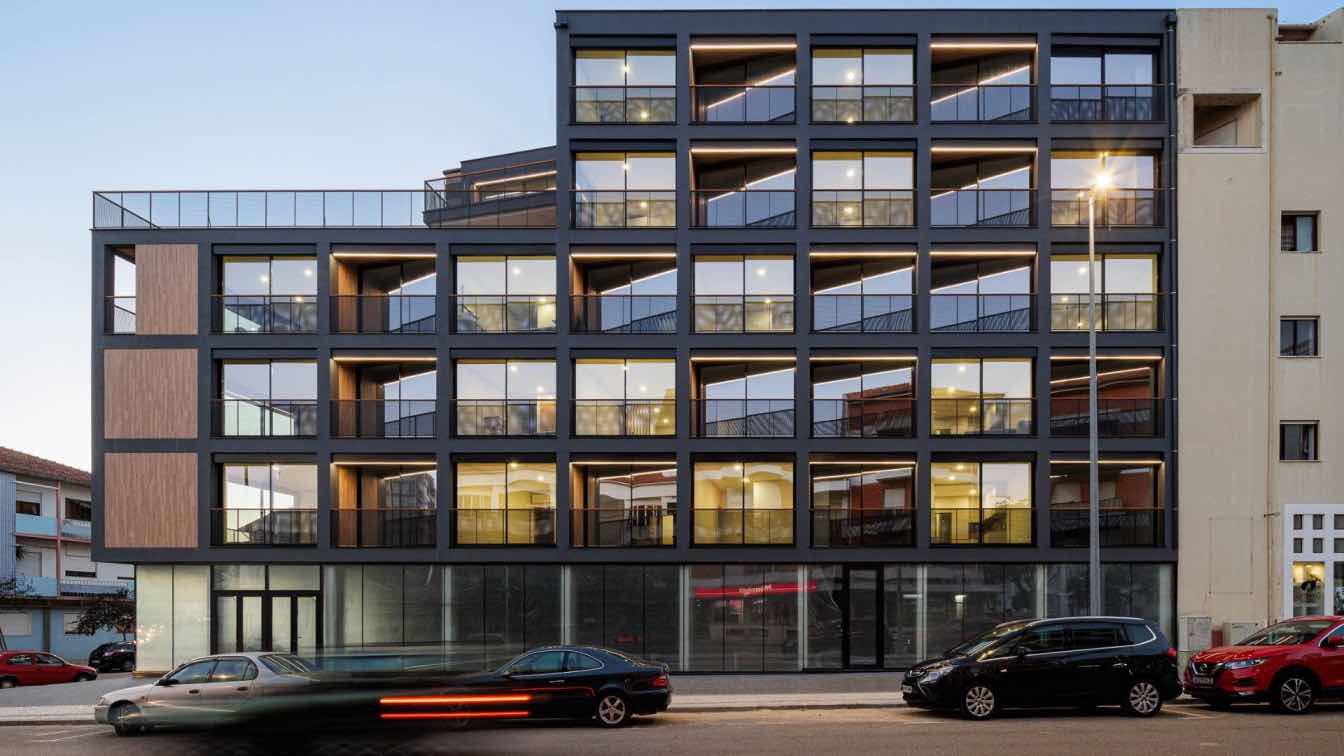OHLAB: Paral·lel is a residential project located in the neighborhood of Bonanova, a quiet residential area in the southwest of Palma. The project consists of two independent blocks. Taking full advantage of the urban planning regulations of ground floor plus three levels, the buildings have been designed so that, despite the density and limited space, each of the 12 dwellings can enjoy the suburban deal of sustainability, energy efficiency, privacy, and even small private gardens and pools.
The duplex dwellings are divided into 6 units on the ground floor with garden and pool, and 6 penthouses with rooftop pool that offer panoramic views towards Palma Bay, as well as Cala Mayor and Illetas. The main facades, situated in the best orientations with views and gardens, are composed of folding wooden slat shutters that act as solar filters, creating a dynamic effect reminiscent of the traditional pergolas and lattices of the Mediterranean. This solution allows for privacy regulation and control of sunlight entry throughout the year. The facade's skin is characterized by its versatility, as the panels can be lifted and transformed from shutters to pergolas based on the needs of the dwelling, orientation, and sun exposure.
This technique enables solar utilization in winter and protection against overheating in summer, creating a changing, organic, and permeable envelope that reflects the interior life of the dwellings. The design of the shutters is optimized through solar studies and draws inspiration from Mallorcan vernacular tradition. The combination of shutters with a cross-ventilation and heat recovery system is crucial in maximizing the energy efficiency of the dwelling. In addition to fulfilling this function, the horizontal wooden slat shutters that compose the main facade meet sustainability and environmental responsibility standards.
The wood used is certified, meaning it has been obtained through responsible and sustainable forest management. The use of certified wood not only promotes environmental protection and biodiversity, but also ensures traceability of the wood and its derivative products throughout the supply chain. This means that compliance with social, economic, and environmental requirements is ensured in each phase of the production process. The project has been designed to achieve maximum energy efficiency and very low cooling demand.
This significantly reduces the need for air conditioning and refrigeration compared to conventional buildings, resulting in reduced energy costs. The lateral facades of the building present a strategy that allows for integration into the urban context. In this sense, more solid and hermetic facades have been designed to limit views towards the closest neighbors and adjoining streets, guaranteeing user privacy. The choice of different textures and earthy tones in the lateral facades contributes to the visual integration of the building into the urban environment and its contextualization within the urban fabric.
The irregularity in the openings and the combination of different textures and tones break away from the flatness and regularity of the lateral facades, providing a more organic and natural character to the building. A rainwater collection and storage system has been integrated into the building with the aim of utilizing available water resources and minimizing environmental impact. This system, based on the installation of cisterns, allows for the collection and storage of rainwater produced on the roof and exterior areas of the building. The use of this stored water serves various purposes, including supplying water to compensate for the amount lost due to evaporation in the pools.

By reusing rainwater to fill the pools, excessive consumption of potable water is avoided. Additionally, the stored water is also used for irrigating the Mediterranean-style gardens, known for their low maintenance and adaptation to the local climate and conditions. The use of rainwater for irrigation helps reduce the water footprint of the building. The selection of materials used in the project has been a key factor in creating sustainable architecture that is contextualized within its Mediterranean environment.
In this regard, a careful selection of natural and local materials has been carried out, allowing for a harmonious relationship between the building and its surroundings, as well as an appropriate response to climatic and environmental conditions. The use of natural materials, such as Mallorcan hydraulic tiles and custom-made terrazzo, contributes to the creation of a warm and welcoming atmosphere inside the building, while reflecting the local construction tradition.
These materials also have a low environmental impact in terms of extraction and production since they are local resources with minimal industrial processing. Being locally sourced materials, they minimize transportation and consequently reduce CO2 emissions. Furthermore, great importance has been given to the choice of oak wood for floors and doors, a noble and durable material that brings warmth to the spaces.

















































